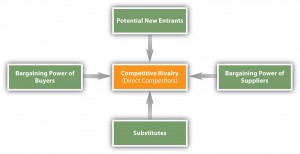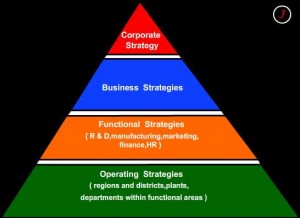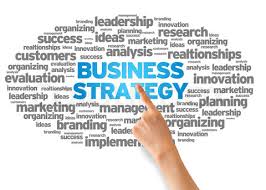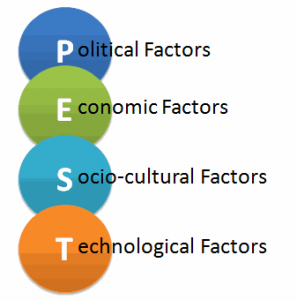Seven TIPS FOR WRITING CASE SOLUTIONS
INTRODUCTION:
Case studies present realistic, conceptual and contextual situation and often involve a problem, conflict, or dilemma that one or more characters in the case must negotiate. Case studies are a form of problem-based learning that present a realistic situation and requires a resolution. In a case study, learners are given details about the situation, sometimes historical context in which key individuals are introduced, objectives and goal are outlined, and followed by certain data collection. A learner needs to analyze the situation, develop an alternative, implement solution and make recommendations (Forman, 1999).
Although a case study has been used in the teaching of medicine, law or business related problems, as it is an effective tool in a number of disciplines. A business case study is a detailed account, information, of what is happening in a particular company, industry, or a project over a specific period of time. It also allows an individual to identify the parameters of a problem, recognizing and evaluating the situation, arguing different point of views and then drive possible solutions (Melvin L. Silberman, 2006).
Moreover, a complex case study contains more variety of information regarding company’s data, policies and procedures, financial reports, market share, economic data, description of resources, job description, individual perception and pricing data. A complex case study needs more attention, to carefully analyze, several re-reading and discussion with the experienced person. A case study can be of two or more than 30 pages, as it helps the learner to think critically and analyze the problem on the basis of the current situation with recommendations. (Graham & Perin, 2007)
A learner, through the process of analyzing, can understand the value of giving response actively and constructively on the conflicts of the organization, develop an ability to give a real life example of the current situation, differentiating facts and figures, generating multiple perception by using different methods, models, theories, concepts and research findings. A learner develops an action orientation and willingness to take risks on the basis of incomplete information, inadequate data, findings and resources, and imperfect solutions. A case study also builds knowledge, skills and confidence in the learner. (Marchisan, 2001)
In order to accomplish business goals, case studies are a great way to explain to customers the value of company’s products and services. The company can provide a real life example in order to satisfy customer’s needs and wants. The success of the company lies within the prospects of potential customers become loyal customer. (Lea, 2006)
When writing a case analysis, a person must have a complete understanding of the current situation and scenario which is being discussed in the case study. Before starting a case analysis, a learner should read the case carefully, develop an understanding about the case, thoroughly research about the situation, ask the questions in a group discussion and make notes all the while. It is necessary to gain complete knowledge about the case, and fully grasp the issues related to the company or the subject of the case. (Adolph, 2002)
TIPS FOR WRITING CASE SOLUTION:
Once a person is satisfied with the information gathered, there is a step-by-step instruction to write an effective case analysis.
1. ANALYZE COMPANY’S HISTORY AND GROWTH:
In a case study analysis, it is important to gain complete understanding about the company’s history and growth because past may adversely affect the present and future of the organization. A critical analysis of the company’s history shows a convenient way that how the company past strategy affects the future profits. A learner must develop a concept about history and growth by gathering its founding, information related to initial product and services, new-product development and how it will pursue in the future. By analyzing the company’s history and growth, a person gains information about the company’s competitors, high entry barrier, geographical location, and technology advancement. (Schumpeter)
The analysis of the company helps to seek intrinsic value of the company, understanding about the company, the health of the business, profitability growth and its future prospects. It includes reading and analyzing annual reports, financial statement to get an understanding of the company’s competitors, market information and revenue growth of the company.
This analysis is also referred as fundamental analysis, which incorporates basic information of the company such as the company’s mission and vision statement, products and services, apparition, goals and values. During the process of the company’s analysis, a learner must consider the company’s growth and history which help in shaping the future of the company. If it is a manufacturing company, the analysis must gain knowledge about the product of the company, analyze its product demand and quality, and how they are satisfying customers’ needs and wants.

Company History Case Solution
2. IDENTIFY COMPANY’S STRENGTHS AND WEAKNESSES:
Once the company’s historical and growth profile is completed, a learner must develop SWOT analysis to further complete the procedure. Case studies are quite often used in international business, they are appropriate for several purposes which includes predictions, data and findings, testing, theory generation, refutation and refining. In this condition, it is necessary to gather information related to the company’s strength and weaknesses, which benefits the company’s future in a positive manner. It identifies each value creation function of the company that defines in which it is currently strong and currently weak. Take an example of the marketing company, they would be weak in product development, but strong in marketing and promotion strategy. (Terry Hill, 1997)
A SWOT analysis is a process, which shows the vulnerability of the company and where it can defend and attack. This analysis is basically a process of action plan or a plan of action. This process can be performed on a product, service, company, institute, or on an individual. If SWOT is done properly, it leads the company to prosper in the future. (G. Houben, 1999)
A SWOT analysis helps to identify the issues affecting the company, but it does not offer a better solution to overcome the issues. There are certain benefits and limitations which need to be understood in order to draw effective SWOT analysis of the company.
BENEFITS:
The main advantage in conducting a SWOT analysis is that it contains little or no effort if a person has some information, knowledge and understanding about the business. This analysis also helps an individual to solve the complex situation. Another advantage of the SWOT analysis is that it concentrates on the factors that are affecting the business environment such as understanding the company’s strengths, addressing the weaknesses, determining the threats and utilizing the opportunities, the company can take advantage of the strengths and develop business goals, strategies, policies and procedures to achieve them.
LIMITATIONS:
A learner must keep in mind while developing a SWOT analysis that it is the only one stage of the business planning process. For complex situations, one needs to do more in-depth research, gather information and analysis to make decisions. There are more limitations in conducting a SWOT analysis, such as it does not prioritizes issues, does not provide a solution or possible alternatives, generates too many ideas, produces a lot of information, however, all are not useful.
Strengths allow the company to consider its competitive advantage in the marketplace. These advantages help the company to establish an effective strategic planning and procedure to fulfil the objectives of the company and further increase its growth. While assessing the weaknesses and understanding them, it helps the company to deal with such issues. It is an overall business approach to assess and recognize company’s weaknesses to overcome these issues. Weaknesses are also attributes of the organization that are detrimental in achievement of its objectives. (Jackson, 2003)

Strengths Weaknesses Case Study Solution
3. ANALYZE THE EXTERNAL ENVIRONMENT:
The third step in a case analysis process is to identify the opportunities and threats within the company’s external environment. In this step, a learner can apply all the information and knowledge gathered from the company, industry and macroeconomics because analyzing the company’s environment is comforting and requires details to utilize the opportunity and overcome the threats.
This step allows to collect additional information from the additional sources such as newspapers, annual reports, and corporate homepages. A learner can conduct research or survey of the business for more information. A learner can also implement Porter’s five forces model, Kurt Lewin’s model and the stage of the life cycle model to derive possible alternatives and solutions.
Analyzing opportunities is a critical stage in which it is important to develop company’s strategies in order to improve and grow in the future. Constantly reviewing the market opportunities helps the company to emerge in the market, developing a competitive edge and make necessary changes that are required in the marketplace. The competitive edge and significant advantages over the companies helps to gain market share, new business and access to capital. Selecting targets that fulfil the needs and wants of the customers while getting the desired result is a difficult task to achieve.
Opportunities may increase market demand, resources, or government and advancement in technology. Tracking down the opportunities helps the learners in setting growth plans, understanding competition, market demand, market expansion, business environment and in developing economic and political policy. Opportunities include factors such as demographics, sociological, economic and political policy, environmental, technology and culture.
The environment, regulations, technology and trends are among the possible factors that threaten the success of the company. By assessing and recognizing the risks and challenges, the market leaders can better prepare themselves and develop possible strategy to prosper in the future. A learner must analyze that threats are the external factors of the companies. They either exist within the industrial sector or outside of the organization, additional threats are unique to the company. The threats also arise when the conditions in the external environment, endanger the reliability and profitability of the organization. They are often uncontrollable, the survival and stability can be at stake.
Threats include competitive factors such as resources, price, promotion, product and distribution, new market expansion, global market expansion, global customers, capability, ownership, substitute products, new entrants’ barrier, suppliers’ customers, product life cycle and cost allocation.
After analyzing the strengths, weaknesses, opportunities and threats, a person needs to create an evaluation of the case analysis. Furthermore, one needs to determine whether the company is strong in a competitive position and can continue on the current pace successfully.

Porter’s Five Forces
4. IDENTIFY CORPORATE LEVEL STRATEGY:
In order to analyze corporate level strategy of the case study, it is important to identify, develop and evaluate company’s mission, vision, goals, objectives and corporate strategies. The information which a person needs to collect and gather is regarding corporate strategy includes the company’s line of business, products and services, the nature of the organization, subsidiaries and acquisitions. This analysis should be able to define the company’s strategy that is pursuing in order to develop diversification in the organization.
To evaluate the corporate level strategy of the organization, a person must develop a procedure that requires to evaluate the corporate strategy, diversification, and deciding what corporate moves the company will make. Some procedures include identifying present corporate strategies, comparing long term and short term attractiveness of the company represented in the business portfolio of the organization, and comparing the strength of the each company’s unit. Apart from that, create a company’s portfolio by developing a corporate portfolio matrix and determining how well the business unit of the company performs in the marketplace and identifies which strategy has a competitive edge in order to compete in the global marketplace.

Strategy Pyramid
By evaluating SWOT, a person can better gain the information of the company’s strategy. A learner can think critically about the ability of the company to diversify its core businesses in the new businesses. Market expansion globally is a key factor in today’s corporate strategy. A person needs to analyze that how the company can expand globally by providing the possible alternatives because globalization helps to increase the customer base and more market expansion. It is an advantage for a company to sell its product in the home as well as in the international business market.
However, corporate level strategy, in contrast to the business level strategy, applies to all levels of the organization and it differs in content. Moreover, multiple industrial companies require different analytical treatment than the single product company. This strategy also shows the big picture view about the organization that includes deciding which product and services to target and compete accordingly, and in which geographical location to operate.
For multiple business firm, the resource and cost allocation are based on how cash is spent, staffing, equipment and other resources which are distributed considering the corporate level of the organization. Market definition is the domain for corporate strategies because it includes the responsibility for diversification, the addition of new product and services in the existing market, the emergence of new market, and falls within the realms of the corporate level strategy.
The top management has a primary decision making responsibility in developing corporate strategies and these managers are directly responsible to stakeholders. While analyzing the corporate level strategy, a learner with the information about the corporation’s multiple business, view of the entire scope of the company market, assessing the organizations strength and weaknesses, develops notes to make certain action plan.
The corporate grand strategies include market expansion, increasing the scope of the business operations and removing the status quo by developing and implementing change in the company, to gain better future and increase revenue.
5. IDENTIFY BUSINESS LEVEL STRATEGY:
Once the case study analysis has identified the corporate level strategy, it is necessary to develop or identify business level strategy in order to perform a complete analysis. A strategic analysis of the business is one of the most basic tools for strategic planning process. In order to analyze business level strategy, the first step is to analyze the problems and goals of the company that are necessary to develop a strategy. For this part of the case analysis, a person needs to analyze the corporate competitive strategy, marketing strategy, pricing and distribution strategy, cost and resource allocation and general focus.
If it is a single level business, then corporate level strategy and business level strategy both are identical. However, if the company is involved in many businesses and subsidiaries then businesses will have its own business level strategy. The company can also market different product and services by using different business level strategy in order to expand its market expansion globally.

Business Strategy
Its implementation is then analyzed in company’s functionality, operational capability, financial records, facts and figures, and competitive business performance. Business level strategy includes, product line and position, customer targets, market access, market expansion, competitive advantage, technical capabilities and strategic development. This process also includes internal and external assessment of the company.
Companies may develop a strategy to have a competitive edge on the low cost allocation, low cost product range and line of differentiated products. It is important to identify the functional strategies of the company as they build competitive advantage on the basis of quality, cost, price, place, promotion, distribution, superior efficiency, innovation, customer responsiveness and to achieve its business level strategy.
After analyzing and identifying the business level strategy, a person has full details and information about the company’s operating system, the strategy that the company is implementing and to be in a position to evaluate the potential of its strategy. Thus, a person can be able to make recommendations and take action in the future. However, first they need to implement a strategy, the way the companies trying to achieve its targets and goals.
6. ANALYZE STRUCTURE AND CONTROL SYSTEM:
The purpose of this section is to identify the company’s structure and control system which the company is using to implement its corporate level and business level strategy and to evaluate whether this strategy is applicable and appropriate for the company. In this step, a learner must develop an alternative in which a person could identify how a business strategy is more suitable for the company to gain profit in the future. Different corporate and business strategies require different structures. A person must also analyze which differentiation is more suitable for the company, whether vertical and horizontal, and how the company manages its control system. Organizational conflicts, power and politics are issues and problems of some organizations. (Connor, 2004)
In order to perform case study analysis, it is important to recognize the facts and figures, and consider whether the cost and structural system of the company can allow the organization to carry out strategies being proposed. The issue in making a strategic decision is that whether the structure and cost of the organizations are suitable in getting the people to work together to implement sustained strategy. The norms and culture of the companies create an issue sometimes in controlling the incentive system of the organization and to further develop their strategies. (O’Grady, 2011)
Unfortunately, it is difficult to develop and analyze the company’s structure and control system because some information of the organizations are hidden. It is worthwhile to search for more information and knowledge of the company’s structure and control system that would be helpful to further develop the strategy.
Organizational change is an issue faced by every organization because most employees are living in a status quo, they do not want a change, and these issues are involved in the case studies because the companies are attempting to alter change strategies and structures to solve strategic problems. Thus, it is important to make an action plan that the company in question develops a solution to achieve its objectives and goals.
7. MAKE RECOMMENDATIONS OR CONCLUSIONS:
The final part of the case analysis is developing a set of recommendations for the company. Along with recommendations, it is necessary to present the interpretations of the result which is gathered or collected. Furthermore, in recommendations, whether the result confronts, completely or partly, it should be based on the expectations or predictions.
A recommendation is the most important factor in which researcher discusses the problem, develops a cause and initiates possible solutions. A learner should keep in mind that the recommendations that are based on a person’s belief and biases are not acceptable, and therefore, one should try to avoid such temptations.
The quality of the recommendations is based upon the direct result of the thoroughness from which a person prepared a case analysis. Every recommendation should be based on and supported by the context of the case. Recommendations generally will be regarding specific ways to change functions, business strategy, corporate strategy, organization structure, hierarchy, and control to improve performance the organization.
In complex case studies, recommendations must be specific and can ask of spending on a certain research and development projects, divesting a certain business, related and unrelated company’s diversification, a change form of strategy, an increase in level of integration and moving different kinds of task in an action plan. An action might involve timetable and schedule for changing the company’s strategy and coming up with a possible result to generate the profits of the company.
While preparing for this part, one should consider the recommendations or develop conclusions which supports the case analysis. Recommendations for possible alternative states, what should be done, the steps required to implement the policy and procedures, the resources and cost needed, and discussed the feasibility of the proposed policy. (Stake)
Apart from that a learner must develop a strategy to analyze which problem or issue needs to be corrected or avoided in order to increase profits of the organization. General statement about the timing and nature of an evaluation plan that would be used to determine the effectiveness of the proposed policy. Lastly, a person gets the opportunity to further help the future researchers to discuss and should take the result of your project.
After finishing the recommendations, one should review their work that it covers all the topics and steps that needs to be examined. Also, one should remove any grammatical errors, poor sentence structure, or other things that need to be improved. (Tellis, 1997)
BIBLIOGRAPHY
Adolph, S. (2002). Patterns for Effective Use Cases.
Connor, P. J. (2004). Structural Analysis and Control.
Forman, J. (1999). Defining the Genre of the “Case Write-Up”.
G. Houben, K. L. (1999). A knowledge-based SWOT-analysis system.
Graham, S., & Perin, D. (2007). Effective Strategies to Improve Writing.
Jackson, S. E. (2003). SWOT Analysis and Implications.
Lea, M. R. (2006). Student writing in higher education: An academic literacies approach.
Marchisan, M. L. (2001). Tips for Teaching the Writing Process to Resistant Writers.
Melvin L. Silberman, C. A. (2006). Active Training.
O’Grady, W. (2011). The influence of control system structure on strategic change processes.
Schumpeter, j. A. (n.d.). History of Economic Analysis.
Stake, R. E. (n.d.). Multiple Case Study Analysis. Amazon.com.
Tellis, W. (1997). Application of a Case Study Methodology.
Terry Hill, R. W. (1997). SWOT analysis: It’s time for a product recall.
How We Work?
Just email us your case materials and instructions to order@thecasesolutions.com and confirm your order by making the payment here








